HISTORY
HISTORY
The Islands are home to some of the oldest monuments in European history, with some dating back to 3500 BC including dolmens, neolithic standing stones and burial grounds. As well as these ancient structures, there are impressive fortresses and castles.
The Bailiwicks are also the last remnants of the medieval Duchy of Normandy of which they were part before the Norman Conquest. The Bailiwicks remained in allegiance to the King of England when continental Normandy was lost in 1204. As a result of their loyalty, the King of England permitted them to follow their own laws and customs and liberties; with such rights later confirmed by the charters of successive sovereigns securing for Islands the rights to their own judiciaries, freedom from the English courts (i.e. the rights be governed and judged by their own laws in domestic matters) and other important privileges.
The Island’s museums and galleries host various permanent and temporary exhibitions showcasing the fruits of its artistic heritage. The father of the Impressionist art movement, Pierre-Auguste Renoir, in the late 1800s completed 15 paintings in less than 30 days in Guernsey, whilst Victor Hugo spent 15 years in Guernsey in exile from his homeland of France, where he penned Toilers of the Sea. Claude Cahun, French artist, photographer, writer and activist on the position of women, lived in Jersey where she mounted an underground resistance campaign following the Nazi’s occupation of the Island in WWII.
The geology of the Channel Islands has its origins in the Hercynian mountain building period, which also accounts for the hills of Brittany and the moors of Devon and Cornwall
Evidence exists of settled communities marked by the building of the ritual burial sites known as dolmens. Archaeological evidence shows that trading links with Brittany and the south coast of England existed during this time
Channel Islands become islands after rise of sea levels and flooding the land between them and the Normandy peninsula
Evidence of occupation and wealth has been discovered in the form of hoards. In June 2012, two metal detectorists announced that they had uncovered in Jersey what could be Europe's largest hoard of Iron Age Celtic coins, 70,000 late Iron Age and Roman coins
King John loses Normandy to the French. Jersey and Guernsey, ruled by Normandy for nearly three centuries, pledged allegiance to King John in 1204. That decision triggered a special relationship with the English crown, which continues to this day
The relationship between the Islands and the monarchy was formalised in the Treaty of Paris and was agreed between Henry III of England and Louis IX of France. These rights for the Islands were later confirmed in a series of Charters by successive Kings and Queens and are the origins and basis of the Islands’ status as Crown Dependencies
English Civil War. King Charles II twice took refuge in Jersey. Later, New Jersey is named after Jersey following a gift of land from the new king to the Island’s governor in recognition of his protection. During the English civil war Guernsey supports the Parliament, but Castle Cornet is held for the King and besieged
In the Battle of Jersey, a French invading party attempted to take over the island, capturing St Helier in a dawn raid. They were defeated by an army led by Major Peirson, who lost his life in the attack. A series of towers were built around the island as defenses against further attacks
Britain is at war with France. Guernsey is fortified against invasion
The French writer Victor Hugo is exiled in the Channel Islands. He spends three years in Jersey before moving to Guernsey in 1855
Renoir paints in Guernsey
The Channel Islands were the only part of Britain to be occupied by German forces. During this time around 2,000 Islanders were deported to Germany. The five-year occupation came to an end on 9 May 1945 - Liberation Day. This day is also Europe Day
